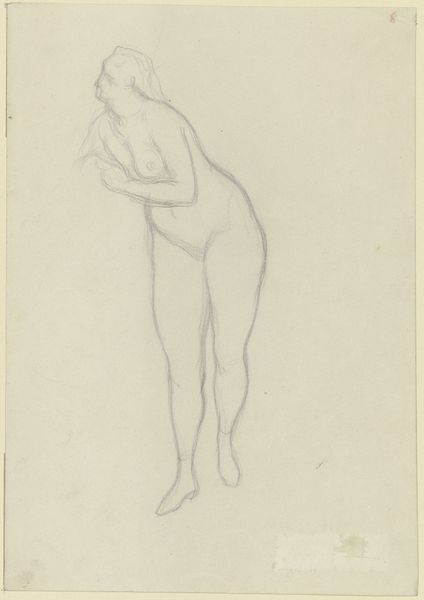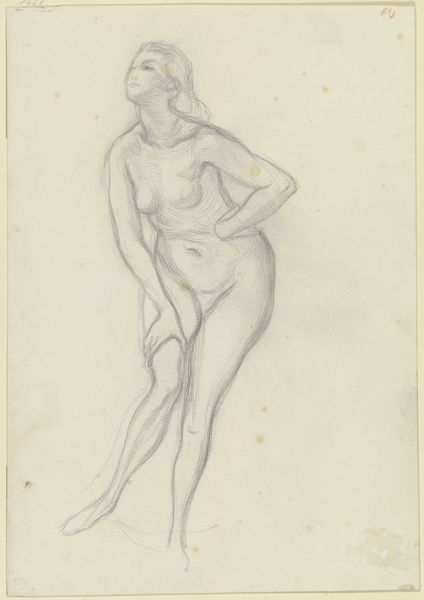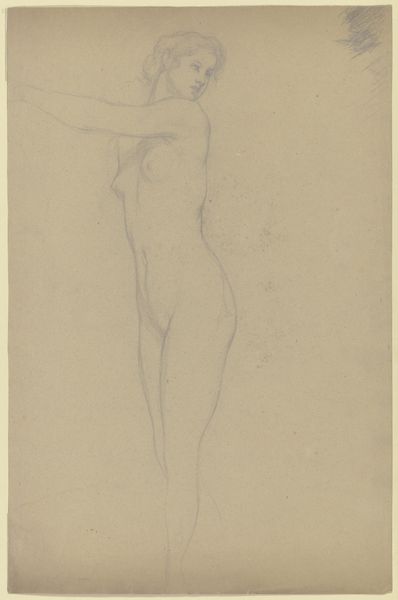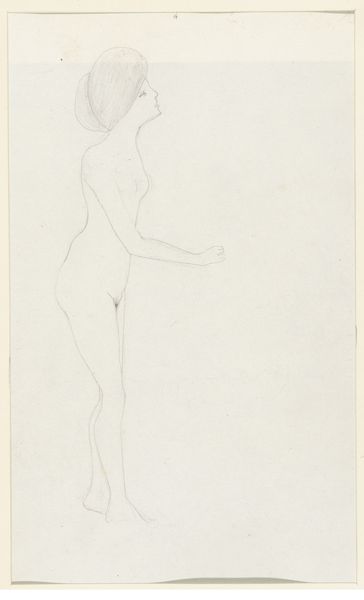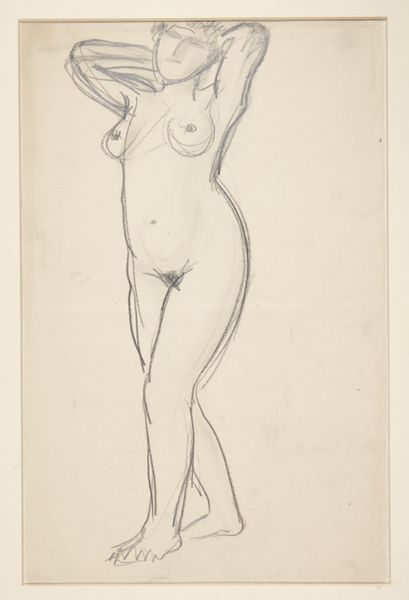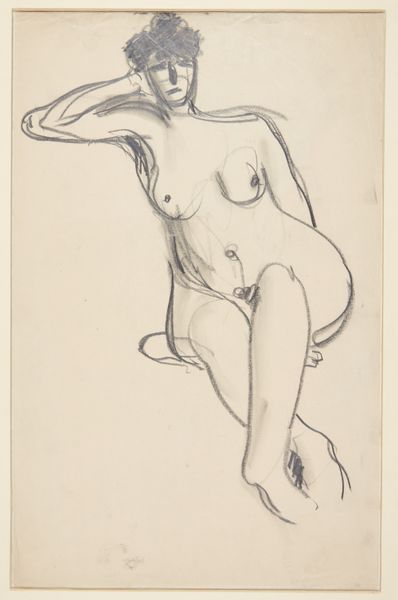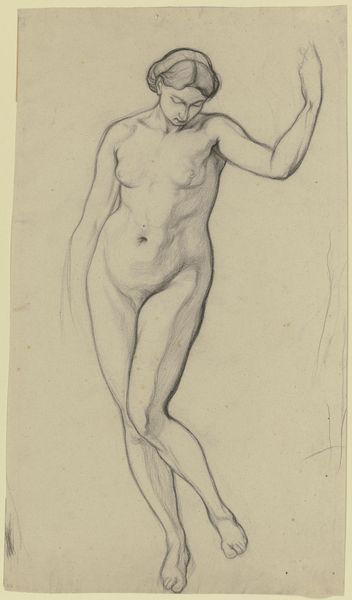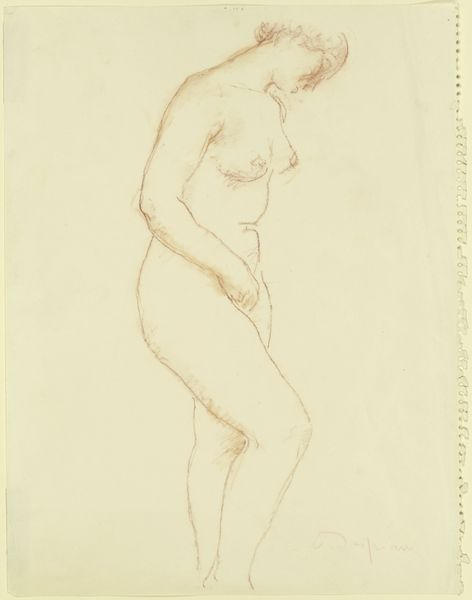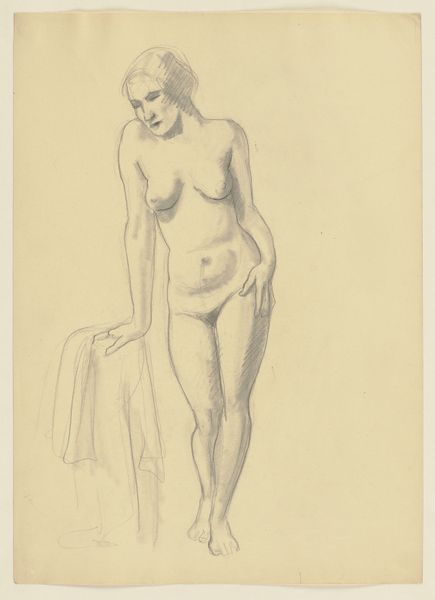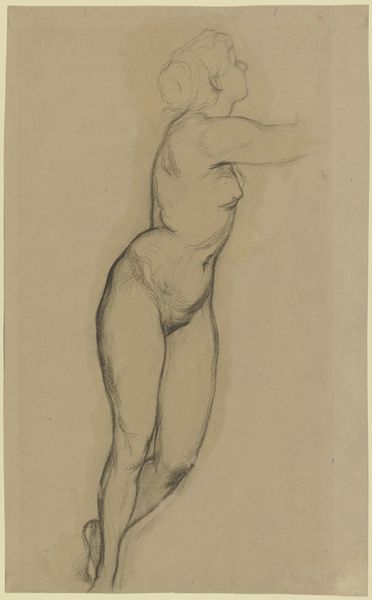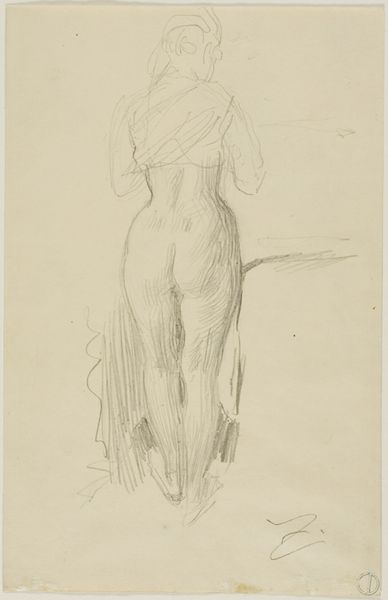
Stehende Frau als Aktfigur, aus _Ritter Hartmut von Kronberg bei dem Reformator Oecolampadius in Basel_ c. 1866 - 1867
0:00
0:00
drawing, pencil
#
drawing
#
pencil sketch
#
figuration
#
pencil
#
academic-art
#
nude
#
realism
Copyright: Public Domain
Editor: So, this is "Stehende Frau als Aktfigur, aus _Ritter Hartmut von Kronberg bei dem Reformator Oecolampadius in Basel_", a pencil drawing of a standing nude woman made around 1866-1867 by Victor Müller. The delicacy of the lines gives it such a fleeting, almost dreamlike quality. How do you interpret this work in its historical context? Curator: That's a keen observation! Looking at this within the context of 19th-century art institutions and academic training, nude studies like this were fundamental. It served as crucial exercises in understanding anatomy and form. However, this sketch also seems linked to a specific, much larger historical painting; it was preparatory. This adds a fascinating layer of institutional context; where does this fall on the spectrum of high art versus academic exercise? Editor: That’s interesting, I hadn't considered the context of academic exercise. I was focusing so much on it as a finished work, a statement perhaps, but if this piece of figure drawing served a role within a much larger, history painting project then, the perception must have been very different at the time. Curator: Precisely. This brings up an important point about art's "public role". Who would have seen this? Was it intended for public display, or just Müller and his atelier? The politics of imagery, even in a seemingly "simple" nude, were deeply connected to ideas about beauty, morality, and even national identity at the time. How do those considerations change your view now? Editor: I see what you mean; it almost feels subversive now. Given all that history, seeing it displayed in a museum seems like it brings all that context forward, right? It’s like, we can view it now outside of all of the politics from the time but that history becomes an extra dimension in experiencing the artwork. Curator: Exactly. And, museums themselves actively shape and reshape these meanings through how they choose to display, frame, and interpret works like this. It's all a complex, evolving web of cultural forces. Editor: I guess, I will never see something so “simple” in the same way! I need to keep asking these contextual questions.
Comments
No comments
Be the first to comment and join the conversation on the ultimate creative platform.
